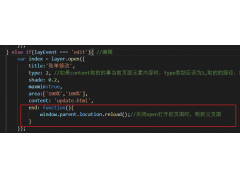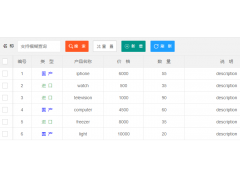Get logarithmic byteFrequencyData from Audio(从音频中获取对数字节频率数据)
问题描述
我之前问了一个类似的问题,但它没有解决我的问题,而且解释得很糟糕。 这一次,我制作了插图,希望能更好地解释。
我的音频播放器有一个简单的频谱分析仪。频率存储在一个数组中,该数组在每隔requestAnimationFrame进行更新,该数组如下所示:
fbc_array = new Uint8Array(analyser.frequencyBinCount);
analyser.getByteFrequencyData(fbc_array);
Read more about getByteFrequencyData here.
所以这很好用,但是我希望频率在整个频谱中均匀分布。目前它显示的是线性频率:如您所见,这里的主要频率范围是高音(高端),而最主要的频率范围是低音范围(低端)。我希望我的分析器具有如下均匀分布的频率范围:
在这里,您可以看到频率在分析仪上均匀分布。这可能吗?
我用来生成分析器的代码如下所示:
// These variables are dynamically changed, ignore them.
var canbars = 737
var canmultiplier = 8
var canspace = 1
// The analyser
var canvas, ctx, source, context, analyser, fbc_array, bars, bar_x,
bar_width, bar_height;
function audioAnalyserFrame() {
'use strict';
var i;
canvas.width = $('analyser-').width();
canvas.height = $('analyser-').height();
ctx.imageSmoothingEnabled = false;
fbc_array = new Uint8Array(analyser.frequencyBinCount);
analyser.getByteFrequencyData(fbc_array);
ctx.clearRect(0, 0, canvas.width, canvas.height); // Clear the canvas
ctx.fillStyle = "white"; // Color of the bars
bars = canbars;
for (i = 0; i < bars; i += canmultiplier) {
bar_x = i * canspace;
bar_width = 2;
bar_height = -3 - (fbc_array[i] / 2);
ctx.fillRect(bar_x, canvas.height, bar_width, bar_height);
}
window.requestAnimationFrame(audioAnalyserFrame);
}
function audioAnalyserInitialize() {
'use strict';
var analyserElement = document.getElementById('analyzer');
if (analyserElement !== null && audioViewIsCurrent() === true) {
if (analyserInitialized === false) {
context = new AudioContext();
source = context.createMediaElementSource(audioSource);
} else {
analyser.disconnect();
}
analyser = context.createAnalyser();
canvas = analyserElement;
ctx = canvas.getContext('2d');
source.connect(analyser);
analyser.connect(context.destination);
if (analyserInitialized === false) {
audioAnalyserFrame();
}
analyserInitialized = true;
analyser.smoothingTimeConstant = 0.7;
}
}
请注意,我在for循环中跳过了8个栏(请参见顶部的canmultiplier)(如果我不这样做,分析器的另一半将呈现在画布之外,因为它太大了。)我不知道这是否也是导致频率范围不一致的原因。
推荐答案
如果我理解正确的话,我认为这对您是有效的,尽管还远远不够完美。
您在for循环中所做的是每8个元素对数组进行一次采样。我会做的是以对数的方式进行采样。
示例:
//Given a range, transforms a value from linear scale to log scale.
var toLog = function(value, min, max){
var exp = (value-min) / (max-min);
return min * Math.pow(max/min, exp);
}
//This would be the frequency array in a linear scale
var arr = [1,2,3,4,5,6,7,8,9,10,11,12,13,14,15,16,17,18,19,20];
//In this case i'm using a range from 1 to 20, you would use the size of your array. I'm incrementing 'i' by one each time, but you could also change that
for (var i = 1; i < 20; i += 1) {
//I'm starting at 1 because 0 and logarithms dont get along
var logindex = toLog(i,1,19); //the index we want to sample
//As the logindex will probably be decimal, we need to interpolate (in this case linear interpolation)
var low = Math.floor(logindex);
var high = Math.ceil(logindex);
var lv = arr[low];
var hv = arr[high];
var w = (logindex-low)/(high-low);
var v = lv + (hv-lv)*w; //the interpolated value of the original array in the logindex index.
document.write(v + "<br/>"); //In your case you should draw the bar here or save it in an array for later.
}
我希望我已经解释清楚了。这里有一个working demo,它有一些边界错误,但它的工作方式与我认为您需要的一样。
这篇关于从音频中获取对数字节频率数据的文章就介绍到这了,希望我们推荐的答案对大家有所帮助,也希望大家多多支持编程学习网!
本文标题为:从音频中获取对数字节频率数据


基础教程推荐
- jQuery File Upload - 如何识别所有文件何时上传 2022-01-01
- 每次设置弹出窗口的焦点 2022-01-01
- Javascript 在多个元素上单击事件侦听器并获取目标 2022-01-01
- 如何使用 CSS 显示和隐藏 div? 2022-01-01
- 为什么我在 Vue.js 中得到 ERR_CONNECTION_TIMED_OUT? 2022-01-01
- 如何使用sencha Touch2在单页中显示列表和其他标签 2022-01-01
- WatchKit 支持 html 吗?有没有像 UIWebview 这样的控制器? 2022-01-01
- 如何在特定日期之前获取消息? 2022-01-01
- 什么是不使用 jQuery 的经验技术原因? 2022-01-01
- Node.js 有没有好的索引/搜索引擎? 2022-01-01

















